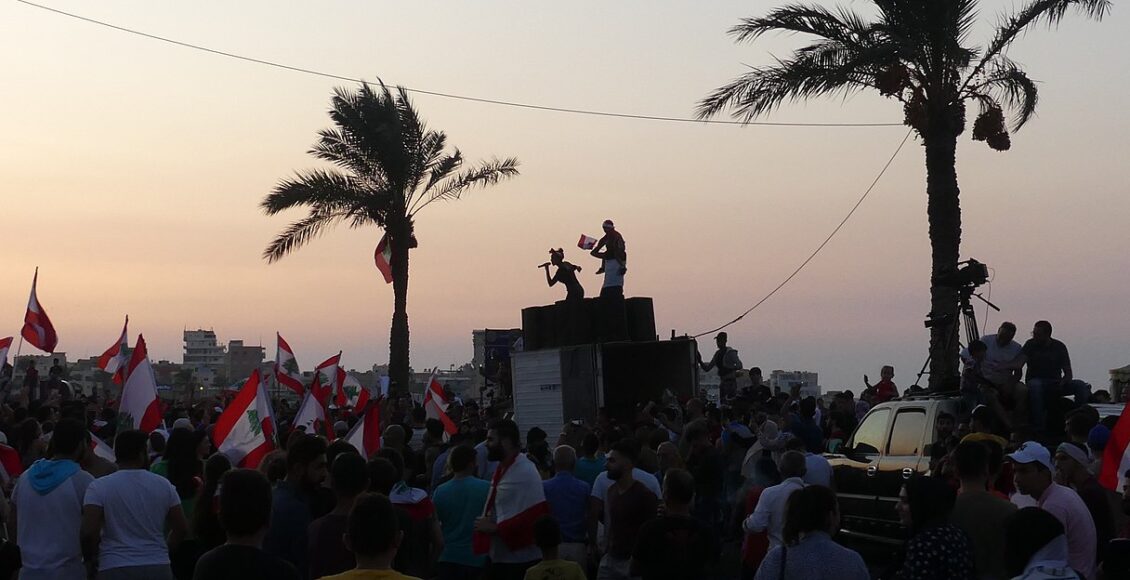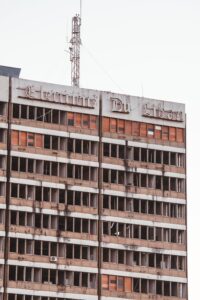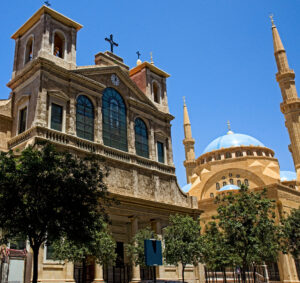Lebanon: A Historic Crisis Threatening Fraternity in the Middle East

The war in Ukraine and the global pandemic have obscured the turmoil in Lebanon, an economic crisis that the World Bank has called one of “the top 10, possibly three, most severe crises episodes globally since 1900” in 2021. Notably, two world wars have occurred during this period. This historic crisis happening before our eyes remains relatively unknown to a vast majority of people and threatens the message of peace and cultural harmony carried by Lebanon in the Middle East.
Lebanon has only recently recovered from a civil war which ended in 1990, between Christian Maronites and Muslims, with the intervention of Syria and Israel. In an effort to rebuild infrastructures and provide basic services, the country accumulated a gross public debt equal to 103% of the GDP from 1993 to 1997. In 2019, Lebanon became the third most indebted country in the world.
What went wrong in 2019? The country faced dollar shortages due to increasing regional turmoil and uncertainty in neighbouring countries such as Syria, thus rendering foreign investment much riskier. The Sunni-Shiite religious divide, which highly influences foreign policy in the Middle East, did not help Lebanon in keeping healthy relations with regional partners. The rising influence of Iran through the support of the heavily armed Shiite Hezbollah discouraged Sunni states’ aid, such as Saudi Arabia. To compensate for this dollar shortage and give the impression of stability to the world, banks elevated interest rates to attract investors, with banks paying profits to investors using the money provided by more recent investors. However, the demand for dollars increased in 2019, as well as cash-outs. This ultimately lead to the collapse of the Ponzi scheme and the default of banks, which could not return the money, thus creating a liquidity crisis. The 2020 explosion in Beirut destroyed capital stocks and productive neighbourhoods while unveiling corruption and poor infrastructure management, leading to an estimated cost – including reconstruction – of nearly US$10 billion. The central bank recently devalued the official Lebanese pound exchange rate with the American dollar by 90%.
This economic collapse led to disastrous social and economic consequences. Lebanon has been reclassified from upper-middle-income to lower-middle-income status by the World Bank as nominal GDP dropped by more than half from 2019 to 2021. At the end of this period, three-quarters of the population was living in poverty. The Lebanese people face electricity shortages and food deprivation, as food inflation rose to 332% between 2021 and 2022. Their bank accounts were frozen due to insufficient reserves. These strict withdrawal restrictions led to several revolts, such as Bassam Hussein’s taking bank employees hostage in August 2022 to withdraw money to pay medical bills. However, this act of desperation was seen as heroic in the eyes of many Lebanese people facing these purchasing power restrictions.

While in Lebanon last summer, I was struck by the Lebanese sense of resilience, which I was not able to put into words until I read the following quote from the book 961 heures à Beyrouth written by Ryuku Sekiguchi: “This consciousness of the impermanence of things due to disasters, which suits the leaders so well, because it can call for resignation.” The past decades have built an admirably resilient population, perhaps to the profit of corrupted leaders and economic mismanagement. But for how long will this resilience last? One must look beyond the economic prism. Unfortunately, this devastating economic crisis could lead to irreversible political and ethnic consequences. Today, the constant politicization of identities and the stigmatization of some groups contribute to ethnic fractionalization, with economic crises exacerbating it. Overall, as exemplified by the proportional distribution of seats in the Lebanese parliament between religious groups, the country had managed to reach the status of an “oasis of fraternity where different religions and confessions meet, where different communities live together” as stated by Pope Francis in July 2021.
However, this “oasis” is being increasingly challenged by the country’s instability, leading to the growth of radical groups and foreign state interventions, which seek to take advantage of Lebanon’s temporary weakness. This is the case for Hezbollah, a Lebanese Shia Islamist political party, which has been involved in the killing of the country’s prime minister Rafic Hariri in 2005. The organization benefits from Iran’s support through financial aid and the delivery of military equipment. The growing of such extremist groups reinforces religious divisions.

Now, what is being done today by the country, with the cooperation of international actors to tackle this economic crisis, before it falls to severe ethnic divisions and cultural conflicts? Lebanon needs to deal with major corruption and legal issues, to build trust, attract foreign aid and “bring confidence back” as stated by the head of the IMF’s delegation in Beirut Ernesto Ramirez Rigo in 2022. In April 2022, the International Monetary Fund agreed to provide Lebanon with $3 billion worth of international reserves assets known as Special Drawing Rights if the country implements reforms focused on transparency and bank restructuring. Unfortunately, the delegation noticed significant delays in the implementation of such reforms during a visit in September 2022. The government still has to prove itself worthy of trust to attract consistent financial support from external actors. The next months and years will be key to the future of the country.
Will the government manage to implement efficient reforms and tackle corruption? Will such projects help Lebanon in overcoming this crisis, hoping that national divisions do not prevail in the meantime? The Middle East has experienced identity crises due to continuously repressed attempts at nation-building by Western powers since the Sykes-Picot agreement of 1916 which divided the former Ottoman Empire into artificial states. This element coupled with shifting dynamics between national, arab and religious identities has led to constant unrest in the area. However, Lebanon has miraculously avoided its neighbours’ current situation even after a religious civil war, managing to balance groups’ power in the country. On a macro-scale, the hope that Lebanon embodies as “a small yet great country, but even more, (…) a universal message of peace and fraternity arising from the Middle East” must be preserved, as stated by Pope Francis in July 2021. In the name of stability in the Middle East: the cradle of civilization, Lebanon must be helped. Tomorrow, Lebanon could become a leading example of cultural diversity and modernity in the region.
Featured image: Protests against the government and corruption in Tyre, 2019. “Protests in Tyre, Lebanon” by Roman Deckert licensed under “Creative Commons Attribution-Share Alike 4.0 International”
Edited by Sarenna McKellar
